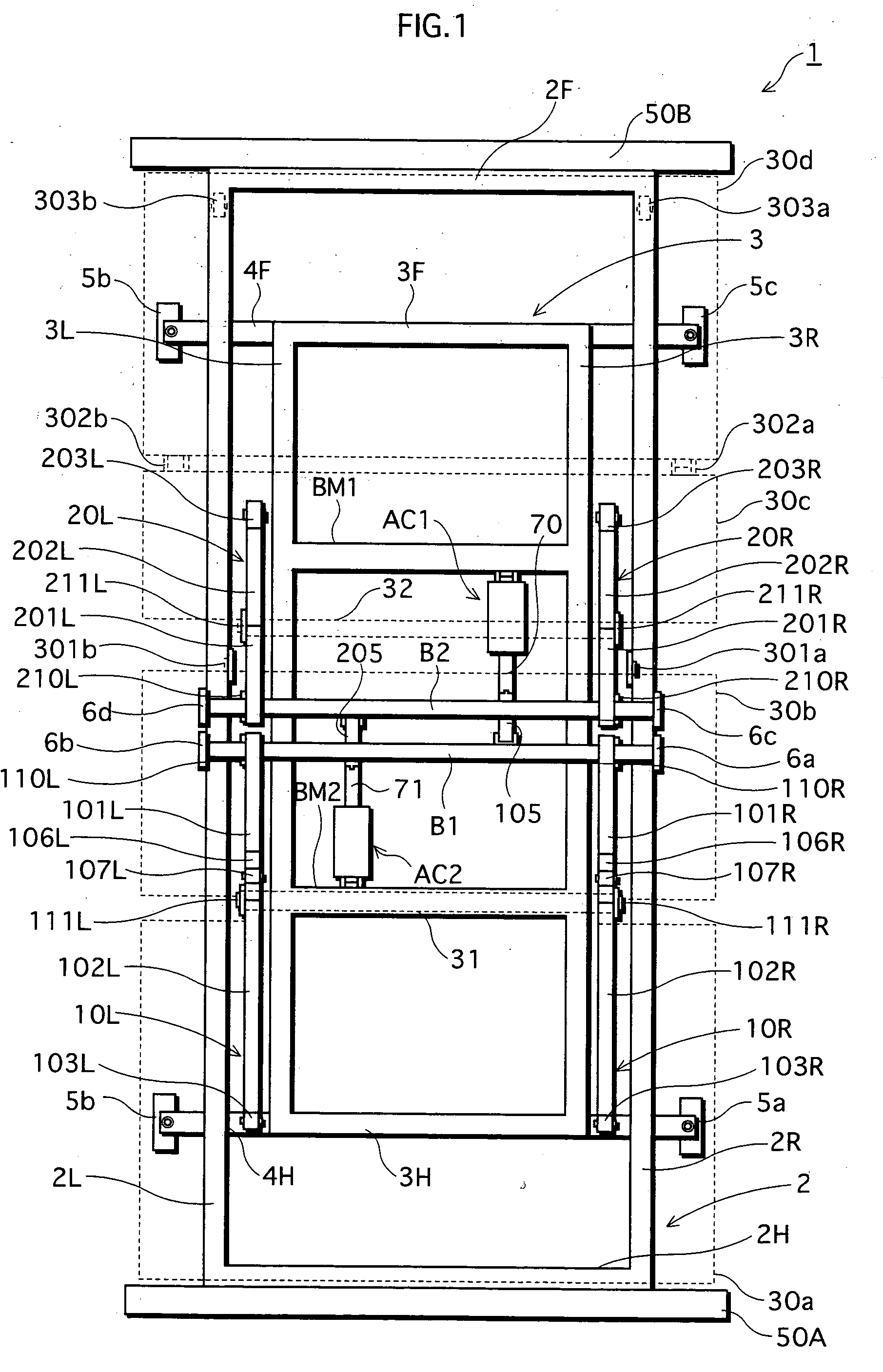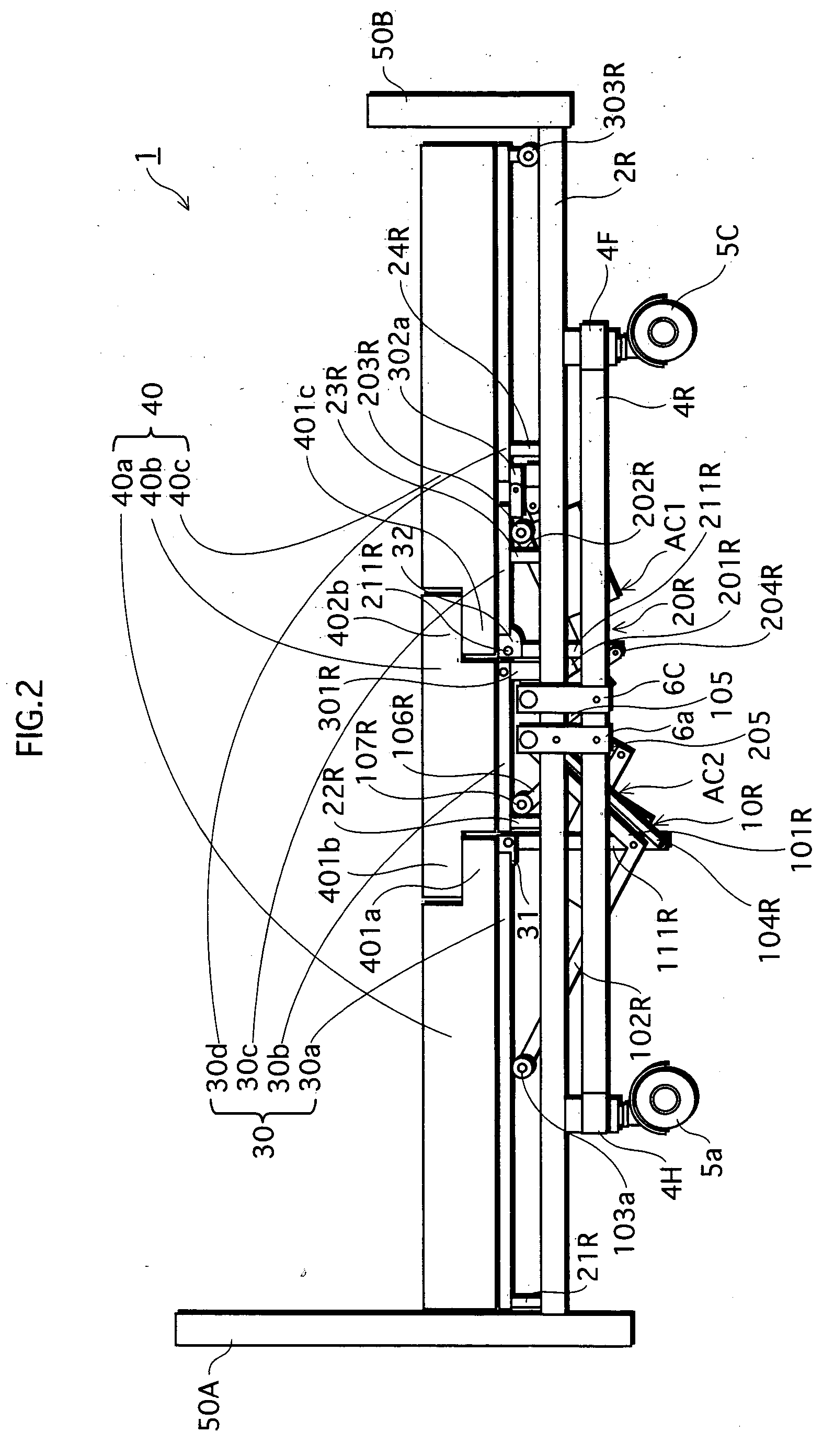Adjustable bed
a technology of adjustable beds and bedsores, applied in the field of adjustable beds, can solve the problems of affecting the care of the recipient, the positional relationship between the motion centers of the bed and the recipient's body, and placing a large burden on the caregiver, and achieve the effects of increasing linear distance, and reducing the occurrence of bedsores
- Summary
- Abstract
- Description
- Claims
- Application Information
AI Technical Summary
Benefits of technology
Problems solved by technology
Method used
Image
Examples
embodiment 1
[0033] 1-1. Overall Structure of Adjustable Bed
[0034]FIG. 1 is a plan view showing the structure of an adjustable bed 1 pertaining to embodiment 1. FIG. 2 is a side view of adjustable bed 1.
[0035] As shown in FIG. 1, adjustable bed 1 has a structure in which two rectangular frames 2 and 3 (first frame 2 and second frame 3) overlap concentrically.
[0036] First frame 2, which is larger than second frame 3, is formed from lengthwise beams 2R and 2L lying in a longitudinal direction of the bed, and cross beams 2H and 2F lying in a width direction of the bed. Boards 50A and 50B are disposed on cross beams 2H and 2F, respectively.
[0037] Second frame 3 is, similar to the first frame, formed from lengthwise beams 3R and 3L lying in the longitudinal direction, and cross beams 3H and 3F lying in the width direction. Two beams BM1 and BM2 lying parallel to cross beams 3H and 3F are disposed within the area of second frame 3, and actuators AC1 and AC2 are coupled respectively to beams BM1 an...
embodiment 2
[0102] 2-1. Overall Structure of Adjustable Bed
[0103]FIG. 8 is a side view showing the systematic structure of an adjustable bed 1000 pertaining to embodiment 2. FIG. 9 is an operation diagram of adjustable bed 1000. Plates 6a and 6c etc have been omitted here in order to simplify the internal structure of adjustable bed 1000.
[0104] As shown in FIG. 8, adjustable bed 1000 differs from adjustable bed 1 by virtue of the fact that parallel link mechanisms 50R / 50L and 60R / 60L (50L and 60L not depicted) equating to parallel link mechanisms 15R / 15L and 25R / 25L, also include pantograph mechanisms that provide extendibility in the longitudinal direction of the bed.
[0105] Specifically, as shown in FIG. 8, parallel link mechanism 50R is formed from the combination of three perpendicular arms 6b (plate fixed to frame 2), 501R and 111R constituting one group, and three moving arms 502R, 101R and 104R constituting another group.
[0106] Of these, perpendicular arms 6b / 501R and moving arms 101R...
PUM
 Login to View More
Login to View More Abstract
Description
Claims
Application Information
 Login to View More
Login to View More - R&D
- Intellectual Property
- Life Sciences
- Materials
- Tech Scout
- Unparalleled Data Quality
- Higher Quality Content
- 60% Fewer Hallucinations
Browse by: Latest US Patents, China's latest patents, Technical Efficacy Thesaurus, Application Domain, Technology Topic, Popular Technical Reports.
© 2025 PatSnap. All rights reserved.Legal|Privacy policy|Modern Slavery Act Transparency Statement|Sitemap|About US| Contact US: help@patsnap.com



